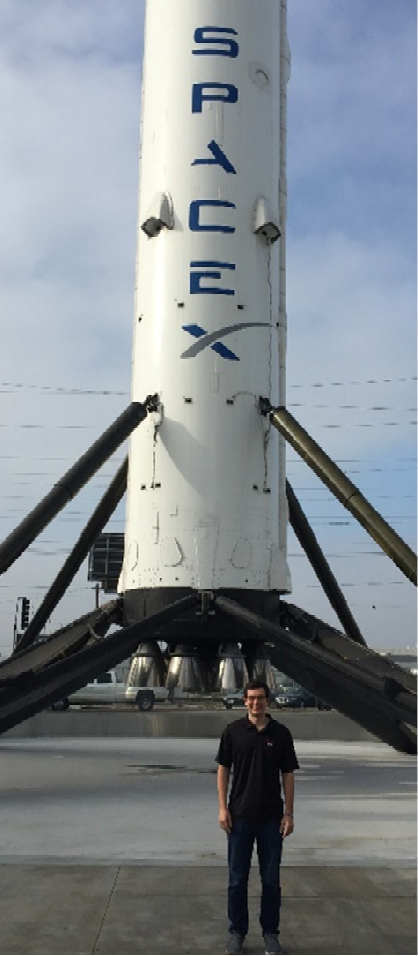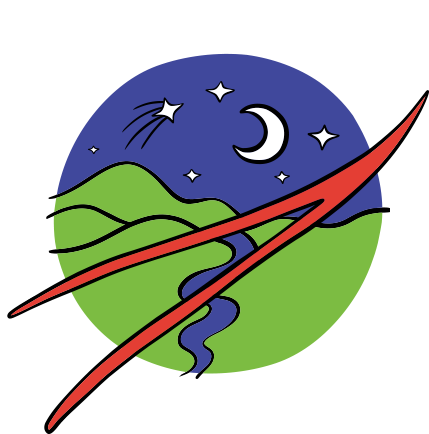“When I was 3, my mom asked if I wanted to become an astronaut – I said no; I wanted to be the person counting down from 10…”
West Virginia University, 2014-2018
Georgia Institute of Technology, 2018-Present

I had the same feeling that every space-oriented undergrad has when they see those big letters -NASA- emboldened on an advertisement for a talk – ‘woah, like NASA, NASA?’. My first dabbling with the West Virginia Space Grant Consortium – an organization that would wholesale change my life – was at a talk given by Justin Smith, a real-life NASA engineer. Justin didn’t mince words – to land a coveted internship with NASA, one should first consider joining the WV Space Public Outreach Team. SPOT, a WVSGC-funded team of STEM ambassadors, became the focal point of my Freshman year. The team would eventually lead me to meeting both Candy Cordwell and Dr. Majid Jaridi of the WVSGC, whose impact on my life would amount to nothing less than a stewardship of continued opportunity and success.
My first direct involvement with the Space Grant would be as a member of the WVU Experimental Rocketry Team – their support of our then-nascent crew, as well as my own independent research, would eventually lead us to an international victory. Soon thereafter, I was selected as a member of the WVSGC-funded WVU Microgravity Research Team. In 2017, I would fly 30 zero-G parabolas, testing electrical solder with applications to long-duration human spaceflight. In a detour from engineering, the Space Grant also provided me funding for several semesters of research under renowned pulsar astronomer Maura McLaughlin. My relationship with the Space Grant would ultimately prove Justin’s original advice prescient, as I was selected for a dream-come-true internship at the NASA Jet Propulsion Laboratory. Funding unsecured, the Space Grant agreed to finance both my internship and travel to California. Their generosity allowed me to work on an exoplanet-hunting instrument that will fly on the Nancy Grace Roman Space Telescope in the mid-2020s. To help adjust during my first time living outside of WV, the Space Grant connected me to JPLers Alan Didion and Cathy Lally. Their kindness that summer was unmatched, and through the Space Grant I made life-long friends.

Capping off my days as an undergrad, Dr. Jaridi introduced me to the director of the Georgia Space Grant Consortium, Dr. Ruffin of the Georgia Institute of Technology. I would go on to attend graduate school at Georgia Tech, completing a Master of Science in aerospace engineering in 2019. While at GT, I collaborated with the Georgia Space Grant Consortium and founded both the Georgia Tech Experimental Rocketry Team and the Georgia Outreach Team for Space: spin-offs reminiscent of my time as a Mountaineer. My time with Lori Skillings and Alysia Watson of the GSGC made me feel as though I had never left home. Leading up to graduation, I arranged to continue to conduct research remotely towards a Ph.D. degree with my then-master’s advisor. As had been the case time and time again, in the face of uncertain funding, the GSGC stepped up and agreed to finance my doctoral research. The Space Grant’s support, even now, is allowing me to follow my dreams.
At GT, my love of rockets would lead me to an internship, and eventual full-time position as a Propulsion Analyst at SpaceX in Hawthorne, CA. As a SpaceX engineer, I use skills every day that were gained or otherwise sharpened through experiences had thanks to the Space Grant. If you are a student interested in NASA, space, astronomy, or the like: look no further than the Space Grant Consortium – they will literally make your dreams come true.
Casey Wilson – Propulsion Analyst, SpaceX
